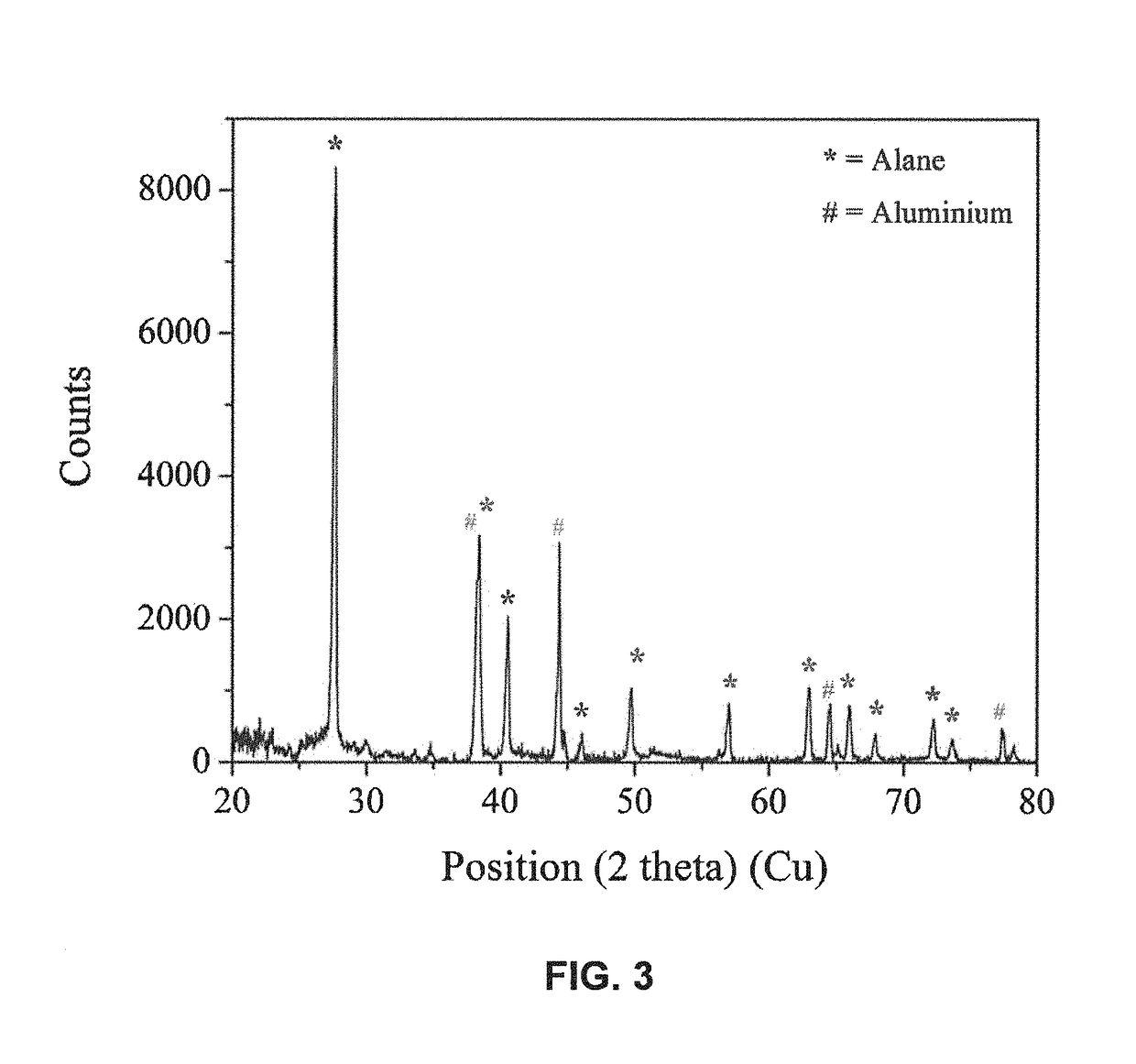Mechanochemical solid/liquid reaction in formation of alane
- Summary
- Abstract
- Description
- Claims
- Application Information
AI Technical Summary
Benefits of technology
Problems solved by technology
Method used
Image
Examples
example
[0033]NaAlH4 and AlCl3, in a 6:1 molar ratio, were combined with diethyl ether and loaded into a planetary milling vial with 30 grams of 1 mm stainless steel ball bearings. The mixture / suspension was planetary milled at 500 RPM for 15 minutes in each direction with a 5 minute cooling period between. The resulting slurry was filtered and washed with diethyl ether under an inert atmosphere. The diethyl ether washings were collected and solvent removed under vacuum.
[0034]TGA / RGA analysis (FIG. 2) of the resulting solid confirmed the material to be AlH3.diethyl ether.
[0035]The AlH3.diethyl ether adduct solid was mixed with LiBH4 and LiAlH4 by mortar and pestle and heated to 65° C. under vacuum for 2 hours. This solid was then washed with 100 mL of diethyl ether and dried to produce α phase AlH3.
PUM
 Login to View More
Login to View More Abstract
Description
Claims
Application Information
 Login to View More
Login to View More - R&D
- Intellectual Property
- Life Sciences
- Materials
- Tech Scout
- Unparalleled Data Quality
- Higher Quality Content
- 60% Fewer Hallucinations
Browse by: Latest US Patents, China's latest patents, Technical Efficacy Thesaurus, Application Domain, Technology Topic, Popular Technical Reports.
© 2025 PatSnap. All rights reserved.Legal|Privacy policy|Modern Slavery Act Transparency Statement|Sitemap|About US| Contact US: help@patsnap.com


